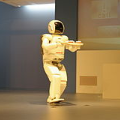Hand-eye calibration is the problem of estimating the spatial transformation between a reference frame, usually the base of a robot arm or its gripper, and the reference frame of one or multiple cameras. Generally, this calibration is solved as a non-linear optimization problem, what instead is rarely done is to exploit the underlying graph structure of the problem itself. Actually, the problem of hand-eye calibration can be seen as an instance of the Simultaneous Localization and Mapping (SLAM) problem. Inspired by this fact, in this work we present a pose-graph approach to the hand-eye calibration problem that extends a recent state-of-the-art solution in two different ways: i) by formulating the solution to eye-on-base setups with one camera; ii) by covering multi-camera robotic setups. The proposed approach has been validated in simulation against standard hand-eye calibration methods. Moreover, a real application is shown. In both scenarios, the proposed approach overcomes all alternative methods. We release with this paper an open-source implementation of our graph-based optimization framework for multi-camera setups.
翻译:手眼校准是估计参考框架(通常是机器人臂或牵控器的底部)和一个或多个相机的参照框架之间的空间转换问题。一般而言,这种校准是作为非线性优化问题解决的,而很少采取的方法是利用问题本身的底图结构。实际上,手眼校准问题可以被看作是同时眼校准和绘图(SLAM)问题的一个实例。受这个事实的启发,我们在这项工作中以两种不同的方式展示了将最新最先进的解决办法延伸至手眼校准问题的成像图式方法:一)用一台照相机来拟订对在基底的眼部设置的解决方案;二)用多镜头的机械装置来覆盖。所提议的方法已经在与标准手眼校准方法的模拟中得到了验证。此外,还展示了真正的应用。在两种假设中,拟议的方法克服了所有替代方法。我们用这个文件以公开来源的方式发布了多镜头设置的图形校准框架。</s>



